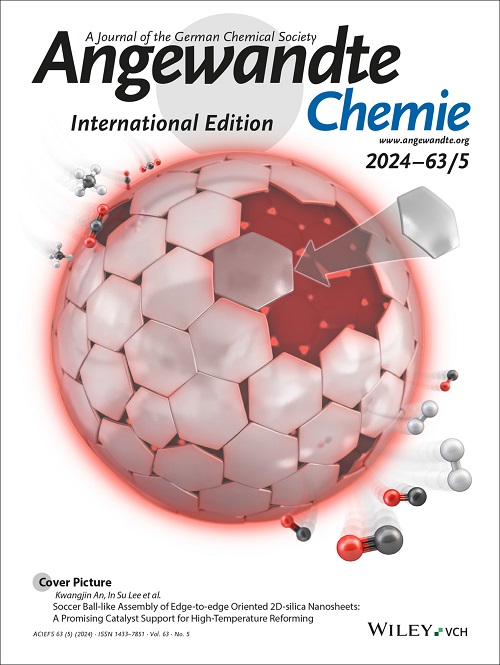The Cooperative Effects of the Rh-M Dual-Metal Atomic Pairs in Formic Acid Oxidation
IF 16.1
1区 化学
Q1 CHEMISTRY, MULTIDISCIPLINARY
引用次数: 0
Abstract
The continuously increasing mass activity in formic acid oxidation reaction (FAOR) is the key to achieving the practical application of direct formic acid fuel cells (DFAFCs). Herein, Rh-based dual-metal atomic pairs supported on nitrogen-doped carbon catalysts [DAP-(M, Rh)/CN] with adjacent interatomic Rh-M (M = V, Cr, Mn, Fe, Co, Ni, Cu) have been synthesized by a “host-guest” strategy. We discovered that DAP-(Cr, Rh)/CN shows the highest mass activity of 64.1 A·mg-1, which is 3.8 times higher than that of the single atom Rh catalyst (17.0 A·mg-1) and two orders of magnitude higher than Pd/C (0.58 A·mg-1). Interestingly, the mass activity of DAP-(M, Rh)/CN firstly increases from 11.7 A·mg-1 (Rh-V) to 64.1 A·mg-1 (Rh-Cr) and then decreases to 21.8 A·mg-1 (Rh-Cu), forming a volcano curve of the reaction activity. Density functional theory calculations combined with in-situ Fourier transform infrared spectrometer (FTIR) spectra reveal that formic acid oxidized on a series of DAP-(M, Rh)/CN catalysts through the formate route with the subsidiary M metal atoms binding the HCOO species and the Rh atom accepting the H atoms. The most suitable adsorption strength of HCOO on the Cr sites luckily contributes to two spontaneous elementary steps and thus accelerate the FAOR rates.求助全文
约1分钟内获得全文
求助全文
来源期刊
CiteScore
26.60
自引率
6.60%
发文量
3549
审稿时长
1.5 months
期刊介绍:
Angewandte Chemie, a journal of the German Chemical Society (GDCh), maintains a leading position among scholarly journals in general chemistry with an impressive Impact Factor of 16.6 (2022 Journal Citation Reports, Clarivate, 2023). Published weekly in a reader-friendly format, it features new articles almost every day. Established in 1887, Angewandte Chemie is a prominent chemistry journal, offering a dynamic blend of Review-type articles, Highlights, Communications, and Research Articles on a weekly basis, making it unique in the field.

 求助内容:
求助内容: 应助结果提醒方式:
应助结果提醒方式:


